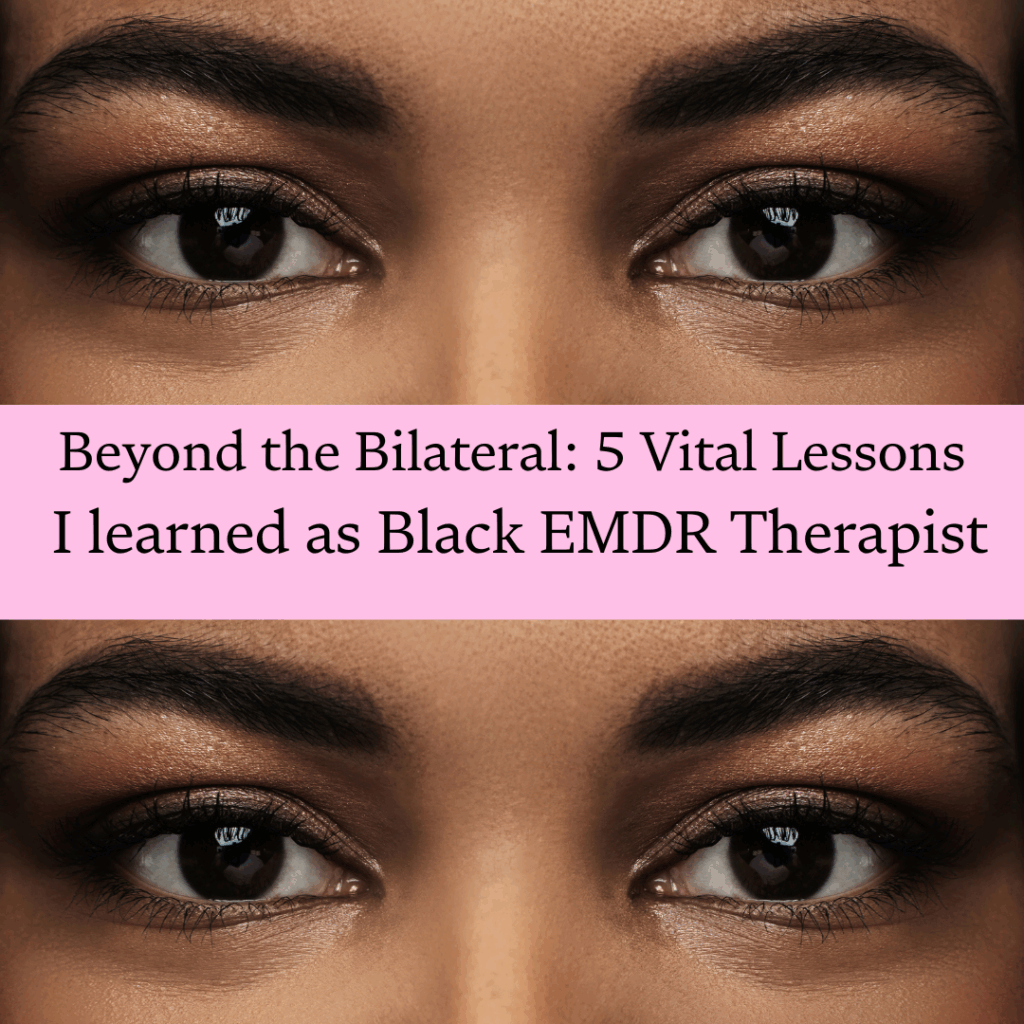For years, the transformative power of EMDR (Eye Movement Desensitization and Reprocessing) therapy has helped countless individuals heal from trauma. As a Black therapist new & old insights quickly emerged, shaped by lived experiences and a deep understanding of how systemic forces intertwine with individual nervous systems. Here are five crucial lessons I’ve learned along the way
Lesson 1: Everything Truly Begins with the Nervous System: Context is King
EMDR fundamentally works by helping the brain reprocess stuck traumatic memories stored maladaptively in the nervous system. This core truth is universal. However, as a Black therapist, I witness daily how the context shaping that nervous system is profoundly different for many clients of colour. The chronic, pervasive stress of racism, microaggressions, and the constant vigilance required to navigate predominantly white spaces creates a baseline neurological load. Recognizing this reality is essential to treatment planning Healing must start by acknowledging the physiological impact of living within systems of oppression before we can effectively target specific traumatic events. The nervous system tells the story, and for many Black clients, that story includes generational and societal trauma etched into their biology
Lesson 2: Race Matters: Systems of Oppression Directly Impact the Window of Tolerance
The concept of the “Window of Tolerance” (WoT) – that optimal zone of arousal where we can think, feel, and connect effectively, is central to trauma therapy. Lesson 2 is unequivocal: Race matters because systems of oppression may actively shrink and destabilize this window. Experiencing or anticipating racial discrimination, witnessing violence against your community, or internalizing negative stereotypes creates chronic hypervigilance (pushing towards hyperarousal: anxiety, anger) or shutdown/helplessness (hypoarousal: numbness, dissociation). For clients navigating racism, their WoT might be inherently narrower or more easily triggered by seemingly “neutral” stimuli that carry racial undertones. Understanding this isn’t about political correctness; it’s about clinical attunement. Effective EMDR with Black clients requires attunement to how racial stressors impact their specific WoT and tailoring stabilization and resourcing accordingly. Ignoring race ignores a core destabilizing factor.
Lesson 3: The “Positive Adaptation” Network is Keyed to Survival & Identity
EMDR seeks to link traumatic memories with more adaptive, positive information stored in other neural networks. The critical insight here is recognizing that what looks like “dysfunction” is often brilliant, necessary positive adaptation within a hostile context. Code-switching, emotional restraint in unsafe spaces, heightened situational awareness – these were survival strategies. For Black clients, these adaptations are often deeply tied to cultural identity and resilience. As a therapist, my role isn’t to pathologize these survival mechanisms but to honour them within the Adaptive Information Processing (AIP) model. We work to help the client reprocess the distress associated with the need for these adaptations, while preserving the strength and resourcefulness they represent. We connect the trauma not just to generic “positive cognitions,” but often to culturally resonant affirmations of worth, resilience, and community belonging that counter the internalized messages of oppression.
Lesson 4: Ruptures Will Happen , And Repair is the Path Deeper connection.
The therapeutic relationship is the container for EMDR’s power. Lesson 4 is a hard-won truth: Ruptures related to race, power, or misunderstanding will occur, even (perhaps especially) with a Black therapist. This could be a microaggression unintentionally uttered by the client (drawing on internalized oppression), a moment where my own racialized countertransference surfaces, or a client’s anger at systemic injustice spilling into the room. The magic isn’t in avoiding rupture; it’s in the courageous repair. As a Black therapist, I bring a specific awareness to these dynamics. Repair involves naming the rupture with cultural humility, exploring its impact without defensiveness, and validating the client’s experience, especially if it mirrors experiences of racial invalidation outside the room. This authentic repair isn’t a setback; it becomes a powerful experiential correction – a lived example of rupture and repair that directly targets relational trauma and builds trust essential for deeper processing.
Lesson 5: Being Relational Builds the Bridge Itself
EMDR can sometimes feel technical, focused on protocols and bilateral stimulation. My final lesson: Being deeply, authentically relational is the bridge that connects the Positive Adaptive Network to the regulated Nervous System. For clients whose trauma stems from systemic dehumanization and relational betrayal (which racism fundamentally is), a genuine, attuned therapeutic relationship isn’t just support; it’s part of the reprocessing. My ability to truly see them, hold their racialized experiences without flinching, celebrate their cultural strengths, and sit with their rage and grief as a Black person who understands the landscape creates safety. This safety allows the nervous system to regulate. It makes the positive adaptive networks (inherent worth, cultural pride, resilience) feel more real and accessible. My presence itself becomes a resource, proof that connection across difference is possible, that understanding exists, and that healing within the context of their identity is achievable. The protocol provides the structure, but the relationship builds the bridge the structure rests upon.
Being a Black EMDR therapist is not just a demographic fact; it’s a lens that clarifies the profound interplay between individual trauma and systemic injustice. It demands that we see the nervous system in its full social context, honour survival as strength, navigate ruptures with courage, and leverage the therapeutic relationship itself as a potent agent of healing and reconnection. These lessons guide me daily, reminding me that true healing acknowledges the whole person’s mind, body, spirit, and the racialized world they navigate. It’s a complex path, but one paved with immense possibility for liberation and resilience. Healing is possible, and it blossoms most fully when we acknowledge all the soil it’s rooted in.
Melissa Taylor MSW, RSW is accepting new EMDR clients and EMDR consultees
Ontario, Canada

